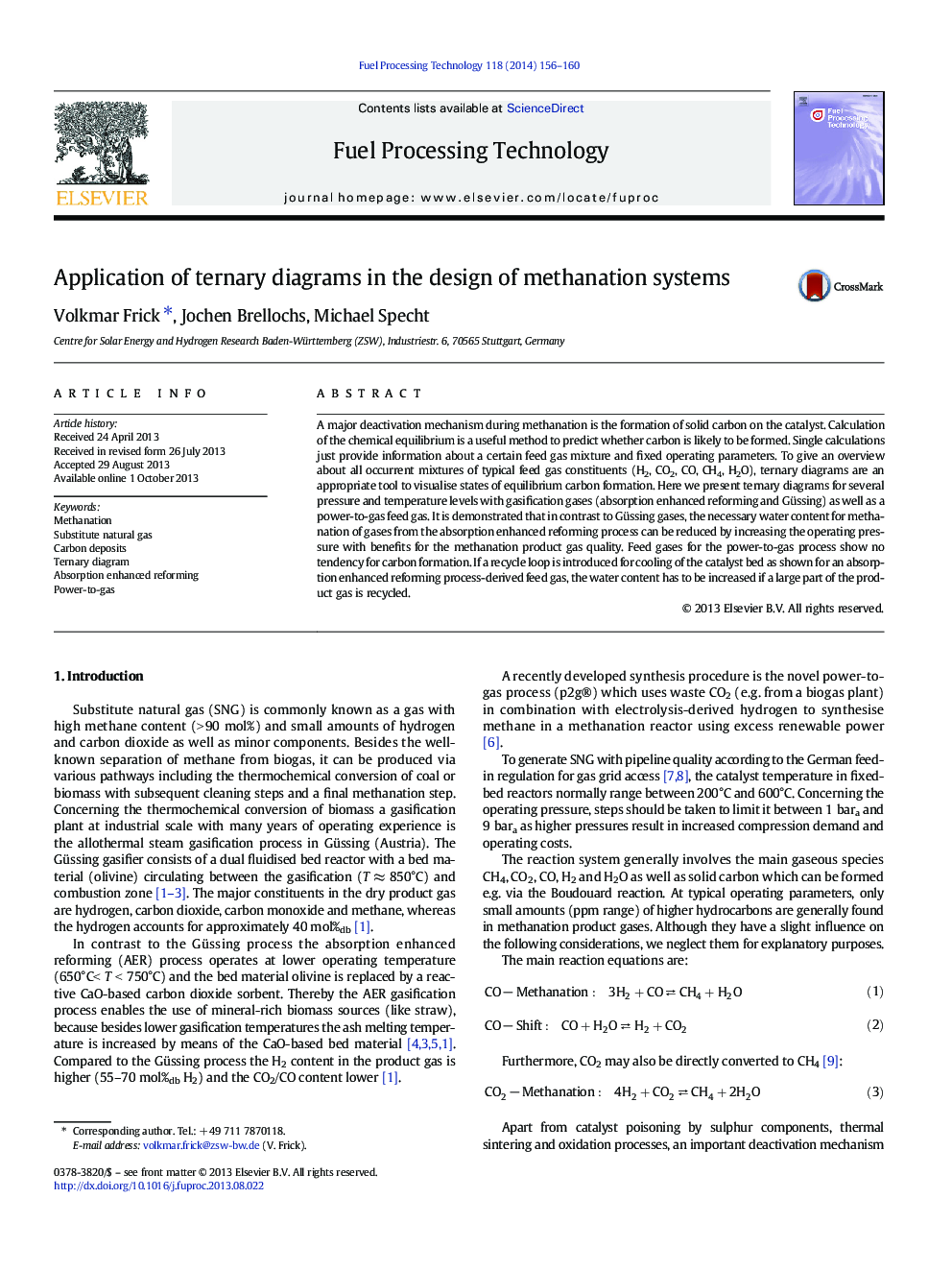| Article ID | Journal | Published Year | Pages | File Type |
|---|---|---|---|---|
| 6657278 | Fuel Processing Technology | 2014 | 5 Pages |
Abstract
A major deactivation mechanism during methanation is the formation of solid carbon on the catalyst. Calculation of the chemical equilibrium is a useful method to predict whether carbon is likely to be formed. Single calculations just provide information about a certain feed gas mixture and fixed operating parameters. To give an overview about all occurrent mixtures of typical feed gas constituents (H2, CO2, CO, CH4, H2O), ternary diagrams are an appropriate tool to visualise states of equilibrium carbon formation. Here we present ternary diagrams for several pressure and temperature levels with gasification gases (absorption enhanced reforming and Güssing) as well as a power-to-gas feed gas. It is demonstrated that in contrast to Güssing gases, the necessary water content for methanation of gases from the absorption enhanced reforming process can be reduced by increasing the operating pressure with benefits for the methanation product gas quality. Feed gases for the power-to-gas process show no tendency for carbon formation. If a recycle loop is introduced for cooling of the catalyst bed as shown for an absorption enhanced reforming process-derived feed gas, the water content has to be increased if a large part of the product gas is recycled.
Related Topics
Physical Sciences and Engineering
Chemical Engineering
Chemical Engineering (General)
Authors
Volkmar Frick, Jochen Brellochs, Michael Specht,
